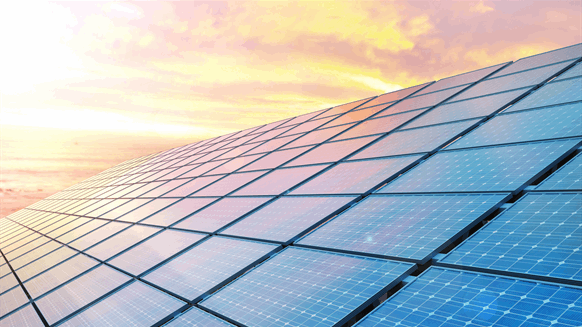Solar energy costs will halve by 2030, accelerating disruption of global energy markets while driving the energy transition, according to a new study by Australia-based think tank Climate Energy Finance (CEF) .
In its “Solar Pivot” report, CEF predicts record solar installation in 2023, with 30 to 50 percent year-over-year growth. Total solar installation could reach 1,000 gigawatts (GW) per year by 2030, based on “dramatic expansion” of solar module supply chains globally and a return to deflation in solar costs for the rest of this decade, according to the report.
CEF said the International Energy Agency (IEA) has “consistently underestimated the rate of solar deployments, the massive deflation of solar generation costs and thus the disruption of the global fossil fuel industry”.
The “IEA World Energy Outlook 2022” report estimated 462 GW of annual solar installations until 2030 under its Net Zero scenario for 2050. CEF predicts that “there is likely to be manufacturing capacity for install… double world locations [number]”.
Investments in solar energy are “booming” and the trend will accelerate in 2023, according to the report. For a growing number of global markets, solar power is the lowest-cost source of electricity generation, even without a price for carbon emissions, the report found.
Meanwhile, prices of polysilicon, a key raw material in solar modules, fell by two-thirds from December 2022 to just $11 per kilo in June 2023, causing solar module prices to fall by a third from from 2021 to 18 cents per watt in May 2023, the CEF report said. Global freight costs have also declined by more than 80 percent since peaking in late 2021. CEF expects solar electricity costs to drop further by 10 percent annually this decade, to half by 2030.
Solar installation trends
Bloomberg New Energy Finance (BNEF) estimated that the world installed a record 268 GW of solar in 2022, relative to global installed solar module manufacturing capacity of 600 GW by the end of 2022, it noted the CEF report. CEF predicts that if most current announcements of solar manufacturing capacity expansion continue, capacity will double by 2024-2025. Most of the expansion projects will be in China, but the US, India and the European Union (EU) will also see capacity expansion expected to be three to five times the current numbers, according to the report.
Solar energy has experienced record annual installation rates every year for a decade. China leads the world with a cumulative 414.5 GW of solar installed by 2022, followed by the EU with 209.3 GW, the US with 141.6 GW, Japan with 84.9 GW and India with 79.1 GW, according to the report.
India and China are leading the development of large utility-scale solar projects, according to the report. “Phalodi in the northern Indian state of Rajasthan is the world’s largest solar district with a total of 6.6 GW of capacity, including the Bhadla Solar Park, currently number 1 in the world with 2,245 GW,” he noted. “Rajasthan has big solar aspirations, aiming to reach 30 GW by fiscal year 2025.”
In China, Goghe County in Qinghai’s Hainan Prefecture is the second largest district with a capacity of 5.1 GW across 18 plants. These include the world’s second-largest solar project, Huanghe Hydropower Developments, with 2.2GW, and the third-largest Longyangxia Solar-Hydro, with 0.85GW, according to the report.
China will install 120 to 140 GW of solar power by 2023, an increase of 37 to 60 percent year-on-year, according to the report using data from BNEF. He said BNEF expects that by 2030, China’s annual installation rate will be about 260 GW, double the world record forecast for 2023. The nation accounts for 40 to 60 percent of the global annual installation of solar, distributed solar and hydro, as well as onshore and offshore wind in recent years, and this will continue, according to the report.
India will avoid building new coal-fired power plants in the next five years as it aims to increase the use of renewable energy to generate electricity, according to the Central Authority of India’s updated National Electricity Plan ‘Electricity of the country. The plan is seen as a step towards India’s goal of increasing the share of renewable energy in its energy mix by 2030, increasing its non-fossil fuel energy capacity to 500 gigawatts by 2030. In the By April 2023, India had 125 GW of renewable energy installed. , which represents 30 percent of the country’s total installed capacity.
According to the report, India introduced a 40 percent solar module import duty and a Solar Performance Linked Scheme (PLI) to incentivize solar manufacturing, resulting in 110 GW of module manufacturing commitments.
Meanwhile, the US Inflation Reduction Act is spurring increased investments in clean energy, “with a sixfold expansion of U.S. solar module manufacturing capacity by 2024 and a likely doubling of installations annual solar installations up to 40 to 50 GW per year by the end of this decade,” the report said.
To contact the author, send an email to rteodoro.editor@outlook.com


